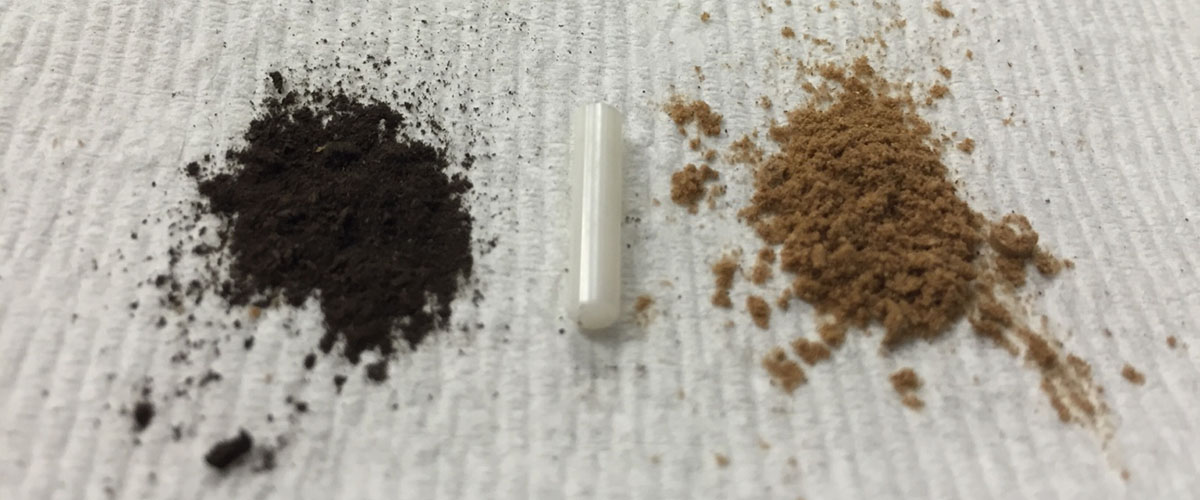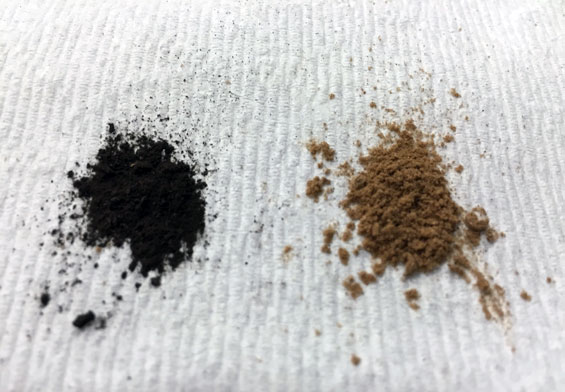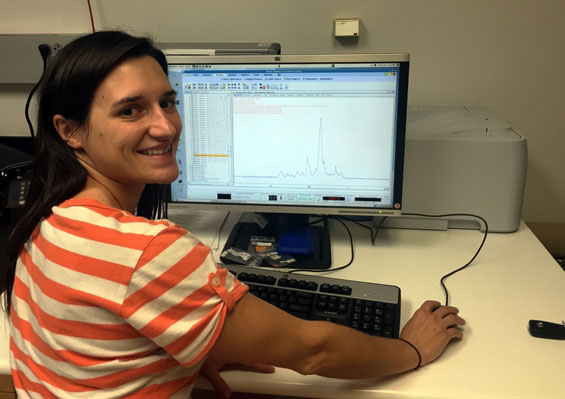Who is the scientist?
Anna Normand is a Ph.D. student at the University of Florida in the Soil and Water Science Department. She specializes in wetland biogeochemistry.
What is she putting in the magnet?
Short answer: Dirt!
Longer answer: Normand is putting samples of peat soil (mostly comprised of partially decayed vegetation) in a 500 MHz magnet at the MagLab’s Advanced Magnetic Resonance Imaging and Spectroscopy Facility. During this yearlong experiment, she is running about 70 soil samples from different climate zones (tropic, subtropic, temperate, boreal and polar) that vary in pH, nutrient content and the way the land has been used. The samples come from such far-flung spots as Alaska, Sweden, Siberia, the Australian Alps, West Africa, Indonesia and Peru.
Why do I care?
Carbon compounds in soil differ widely in chemical composition and stability. Because peat soils are high in organic matter, they are high in carbon. While peatlands comprise just 3 percent of the Earth’s landmass, they store 17 to 20 percent of the carbon in the planet’s soils. The disturbance of these ecosystems, and the consequent release of carbon – carbon dioxide and methane – into the atmosphere, has potentially big effects on global warming.
Normand is studying what affects peat soil carbon composition across the globe. After drying her peat samples and grinding them to a fine powder, she uses carbon-13 nuclear magnetic resonance (NMR) to differentiate the forms of carbon in the samples. She loads her samples into a rotor that is placed in the magnet using a magic angle spinning probe that spins the rotor around at a rate of 8,000 times per second!
Normand’s preliminary results show that climate zone, nutrient content and land use have a significant effect on peat soil carbon composition. So forms of carbon found in warmer climates and higher nutrient soils have rapidly decomposed and are now harder to break down than those in colder climates with lower nutrient soils. Her research could help planners and engineers, for example, know how readily a specific peatland will release carbon dioxide or methane into the atmosphere as a result of being drained or some other disturbance.






